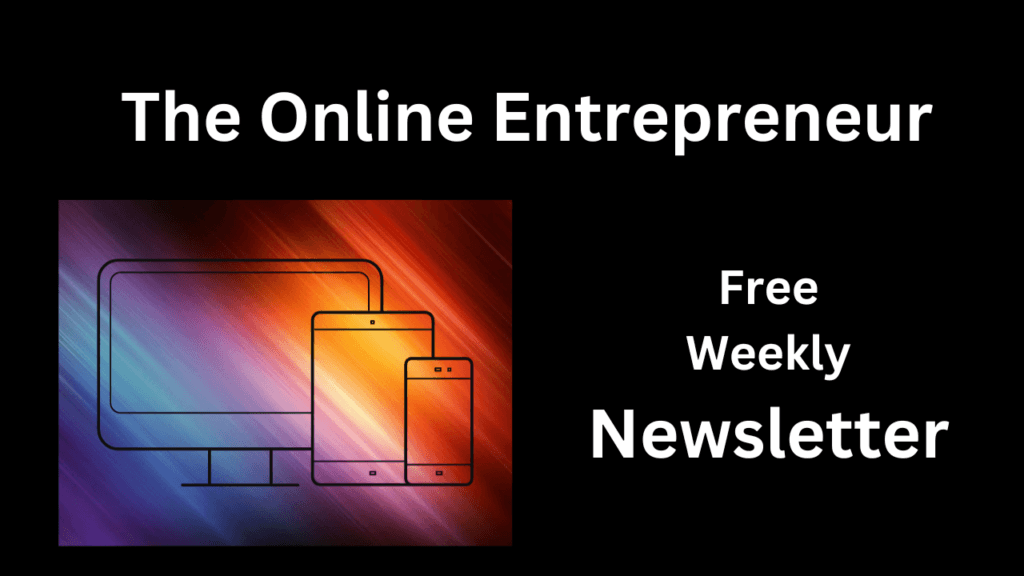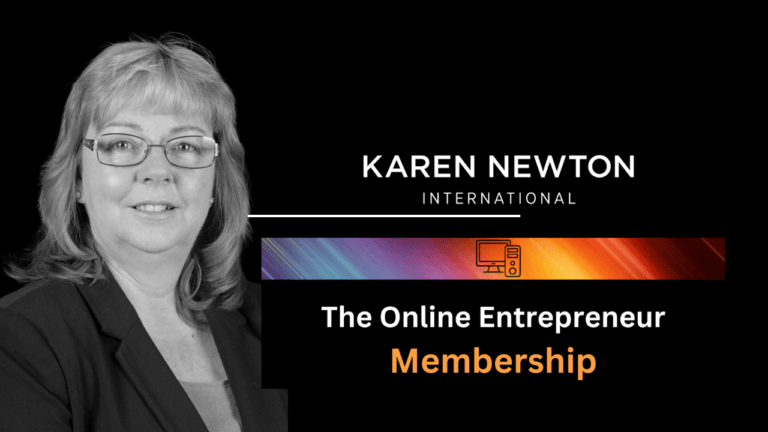6 Lessons Learned In The First Week As An Online Entrepreneur
Becoming an online entrepreneur is easy, well most people will let you think that. From my experience it is a steep learning curve but one I’m enjoying.
These are the 6 lessons learned in my first week as an online entrepreneur.
Domain Names

Finding a name for a business can be difficult at the best of times. However, when you decide to get a domain name and put your business online it can be even more difficult.
About three months before I started The Online Entrepreneur website, I had started an online newsletter that was gaining traction with a lot of people subscribing. (subscribe to the newsletter using the link on the side panel)
I decided build my website around the newsletter and call the website Online Entrepreneur.
Buying the domain name Online Entrepreneur was more difficult than I thought. The name was available but at a hefty price. $26,500 (twenty-six thousand five hundred dollars) was more than I was willing to pay for a domain name.
Variations on the name were tried. The closest variation came in at $11,000 (eleven thousand dollars)
The first lesson learned was that a compromise is needed to get a domain name close to the business name and at a reasonable price. Eventually, I settled on theonlineentrepreneur.co.uk which cost £11.49 for one year.
Website Hosting

In 2020, I was having issues with a website hosting company and needed an alternative host. Wealthy Affiliates was recommended so I joined. The package allowed up to 10 websites to be hosted.
Once the new domain was set up the hosting was redirected to Wealthy Affiliate.
Wealthy Affiliate provides fantastic video training and community support. Between them and YouTube, a theme for the website was created, and the back-office setup completed.
The setup included removing preset blogs and comments. Installing some plugins to assist the site with SEO optimization and meta titles.
A framework created for website content.
Google Site Kit was another plugin added to track progress on getting the website live and visitors to the site.
Without the video training this would not have been done.
The second lesson learned was to have a website host who provided training and had a great support community.
Website Pages

The average number of pages on a website, according to Google research is 7.9
My philosophy was that if I wanted the website to attract good traffic visitors then an above average website was needed.
But what should be included in pages or posts?
Lesson 3 was to study what other people are doing and simply do the same.
Looking at websites in my industry, how up to date the content was and how the websites were structured.
This is when search engine algorithms came onto my horizon together with the way Google and other search engines were restructuring what they were looking for.
If more traffic was desired then keeping up with new online requirements was essential.
An outline of the pages on the website was created together with a Navigation Bar part of search engine requirements.
Scheduling Time to Write

Websites need pages and blogs to get onto search engine radar.
Research had identified that at least 100 blogs was required to increase website rankings and attract more visitors to the site.
Lesson 4 was creating a list of possible blogs to write, pages to create and scheduling time for writing.
During the research about the best type of websites to create, there was a lot of information about the number of blogs needed and how to create them. Some sites were doing challenges of write 30 blogs a month or write 1000 in a year.
With other work commitments this was not feasible for me, so a target was set of creating 2 blogs a week so there would be 100 blogs on the site by the end of the year.
After 3 months there were 40 blogs on the website and 13 pages.
The target of having more that 7.9 pages was achieved. The target of having 100 blogs by the end of the year was ahead of schedule.
Research

Writing the blogs meant doing a lot of research about the type of information people were looking for.
Lesson 5 was to ensure the writing is for the visitor not what I wanted to write.
Research taught me several things that have helped the website grow quickly.
- Write what the visitor wants and not you want to write.
- Learn how to create content that answers the most asked questions
- There is a specific format for the blogs which encourages the search engines to promote the website.
- Links are an essential part of creating content. This includes internal, external and backlinks.
- Be prepared to research daily and update content as needed.
Planning

This lesson is one of the most critical – Planning
- Research the demand for content and plan the type of content to be created for the website
- Plan how to link content to one another so every piece of content has at least an internal link. Preferably internal and external.
- Plan the type of content being created. There are many different types of content but 3 specific types that should be on every website.
- Plan how often the content will be reviewed, updated and new links to other blogs created.
- Plan your time. Ensuring time is allocated to planning, research, writing and video creation.
- Plan which social media platforms are going to be used for advertising your website and create short form posts or videos to drive traffic to the website.
- Plan what products or services are going to be added to the website
- Plan how and when monetization will be added to the site.
Plan, plan, plan.
The Results

It took 5 days to get the first post indexed on Google. Consistency is the key to attracting search engine bots and getting content indexed on search engines. Now blogs are usually indexed within 24 hours.
Driving traffic to the website takes time. It’s not a sprint but a commitment to creating content for the visitor. The average time visitors spend on the site varies between – 2 mins up to 18 mins. This good and helps improve search engine optimization.
Visitor numbers will grow quickly if the website structure, format and content is right. This website grew to 600 visitors within 3 months.
The 6 lessons learned in the first week and being committed to continuing to practice those lessons is seeing steady growth and lucrative results for the website.






